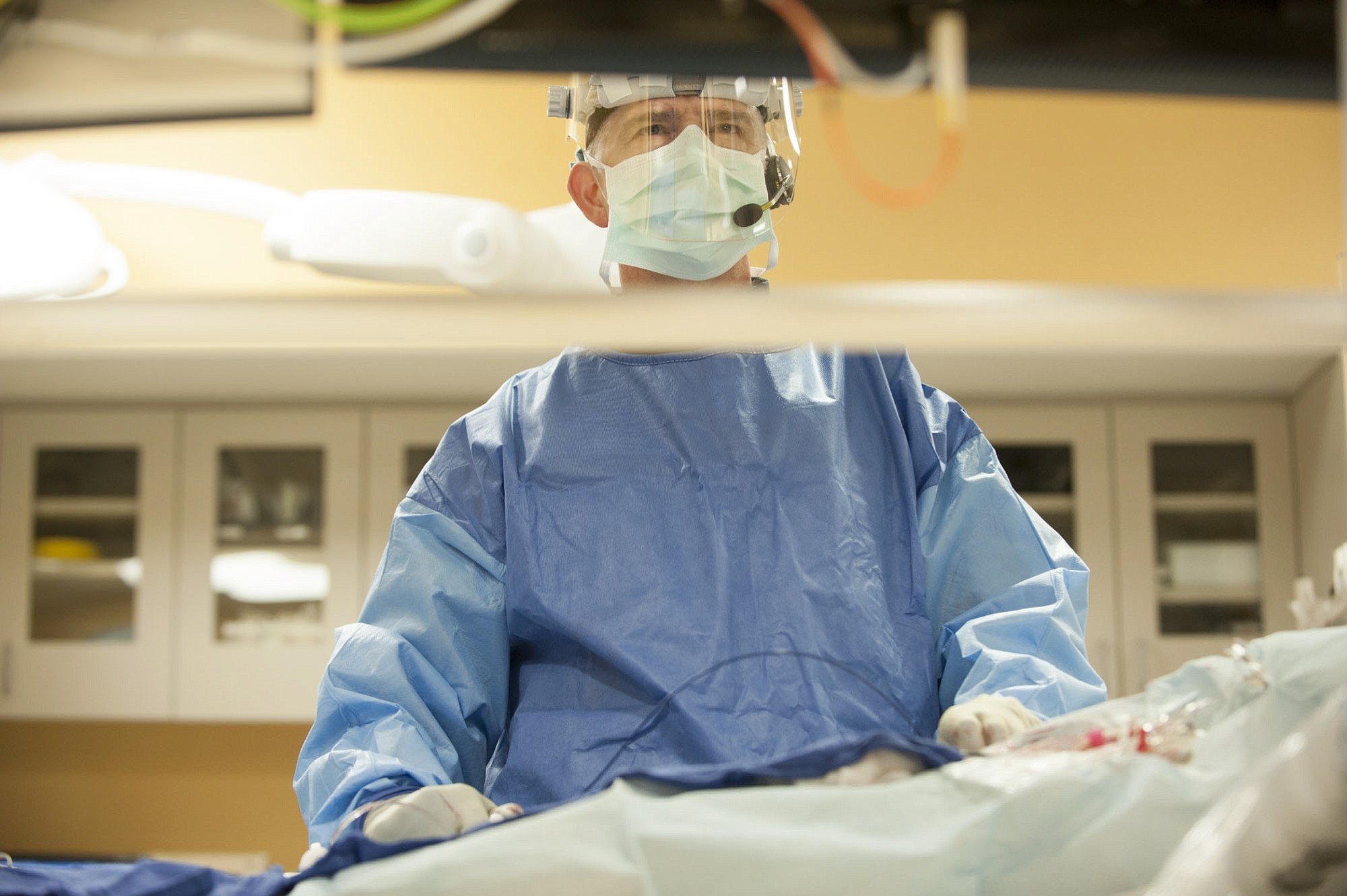People experiencing atrial fibrillation that can’t be sufficiently managed by medication have another option in Clark County.
Over the last few years, Dr. James Reiss, a cardiologist at PeaceHealth Southwest Medical Center, has honed a relatively new method that uses liquid nitrogen to block the triggers causing atrial fibrillation — freeing the patient from medication and episodes of rapid heart rate.
“Compared to how we used to do this, it’s a whole new world,” Reiss said. “This technology was introduced four years ago, and it’s completely revolutionized how we treat people.”
Atrial fibrillation is an irregular and often rapid heart rate. During atrial fibrillation, the heart’s two upper chambers beat chaotically and irregularly, out of coordination with the lower two chambers of the heart, according to Mayo Clinic.
Symptoms of atrial fibrillation include heart palpitations, shortness of breath, weakness and fatigue. Episodes of atrial fibrillation can come and go and may be infrequent or persistent, according to Mayo Clinic.
Atrial fibrillation is unheard of in children, Reiss said. By about age 40 or 50, people may begin to experience episodes, and by age 70 to 80, atrial fibrillation is much more common, he said.
“It’s an epidemic in elderly folks,” Reiss said.
New option
When medication cannot manage the condition, patients may consider surgery. For nearly four years, Reiss has offered the newer surgical method, called cryoablation.
In the procedure, Reiss inserts a catheter into a blood vessel in the groin and guides it to the heart. The end of the catheter has a balloon that inflates to 28 millimeters.
Reiss uses ultrasound of the heart and 3-D imaging to guide the catheter to each of the four veins in the left atrium of the heart, where atrial fibrillation occurs. Once the catheter is in place at the mouth of the vein, the balloon is inflated. The balloon fills with liquid nitrogen — which is typically about minus 50 degrees Celsius (minus 58 degrees Fahrenheit) — that freezes the tissue for 150 seconds.
In one motion, the entire vein is isolated, preventing the electrical signals from the veins that would cause the atrial fibrillation to reach the left atrium.
“By fixing the triggers, we fix the clinical burden of this and improve their quality of life,” Reiss said. “To get rid of those triggers, you have to go in and electronically isolate the veins.”
The process is designed to use a considerable amount of X-ray, Reiss said. Many surgeons use X-ray throughout the entire process, exposing patients to 20 to 40 minutes of X-ray, he said. Reiss typically uses about 45 seconds of low-power X-ray, relying on the ultrasound and 3-D imaging as much as possible.
“We do this primarily using no X-ray or minimal X-ray,” Reiss said.
When Reiss first began offering cryoablation 3½ years ago, the procedure took him about eight hours. Now, it typically takes him about three hours, he said.
When ablation was first introduced as a treatment for atrial fibrillation, cardiologists used heat-based ablation. The concept was to find the specific points around the vein that were triggering atrial fibrillation and burn them, Reiss said. The problem, he said, is the electrical signals may be firing from different areas day to day.
The procedure evolved to burning around the entire vein, but the method was time consuming because it required small, successive burns, Reiss said. Then, surgeons realized a liquid nitrogen-filled balloon could essentially serve as a cork in the vein and freeze the tissue in one motion — a more effective way of performing ablation, he said.
Cryoablation is also safer, Reiss said. The other methods came with the risk of burning a hole in the vein or slipping and burning farther into the vein, he said. The other methods also came with more complications — such as reduced vein size following the procedure — and were often less successful, with a success rate of about 50 percent one year after the procedure, Reiss said.
After the cryoablation, patients may experience one or two episodes of atrial fibrillation in the first month or so. But by about three months post-procedure, most patients report no episodes, Reiss said.
Improving life
Atrial fibrillation doesn’t have a high mortality rate, but its impact on the quality of life is significant, Reiss said. Atrial fibrillation also increases a person’s risk for stroke, often requiring the need for blood thinners, he said.
Michael Lavelle, a retired Vancouver cardiologist, first started experiencing spells of rapid heart rate, fatigue and shortness of breath about a year and a half ago. The episodes were infrequent, only one or two every couple of months, and would last for a couple of hours. As a physician, Lavelle suspected atrial fibrillation.
“You could tolerate that for a while, but then you couldn’t do much activity,” he said.
After about a year, the episodes became more frequent — weekly, then several times a week — and lasted for several hours. Lavelle went to the emergency room to have his heart rhythm documented and get a prescription for medication to manage the arrhythmia.
Lavelle took the medication whenever he experienced an atrial fibrillation episode, but it took about four hours for the medication to restore a normal rhythm, Lavelle said. As the episode frequency increased, Lavelle started taking the medication regularly to try to prevent the episodes, he said.
“It helped with the arrhythmia, but I had to take more and more of it and had more fatigue and more symptoms,” Lavelle said of the medication. “I couldn’t tolerate it any more.”
In September, Reiss performed cryoablation on Lavelle.
Lavelle experienced one atrial fibrillation episode about a week after the procedure but hasn’t had any more since, he said.
“I’m able to do just about anything I want,” Lavelle said.




